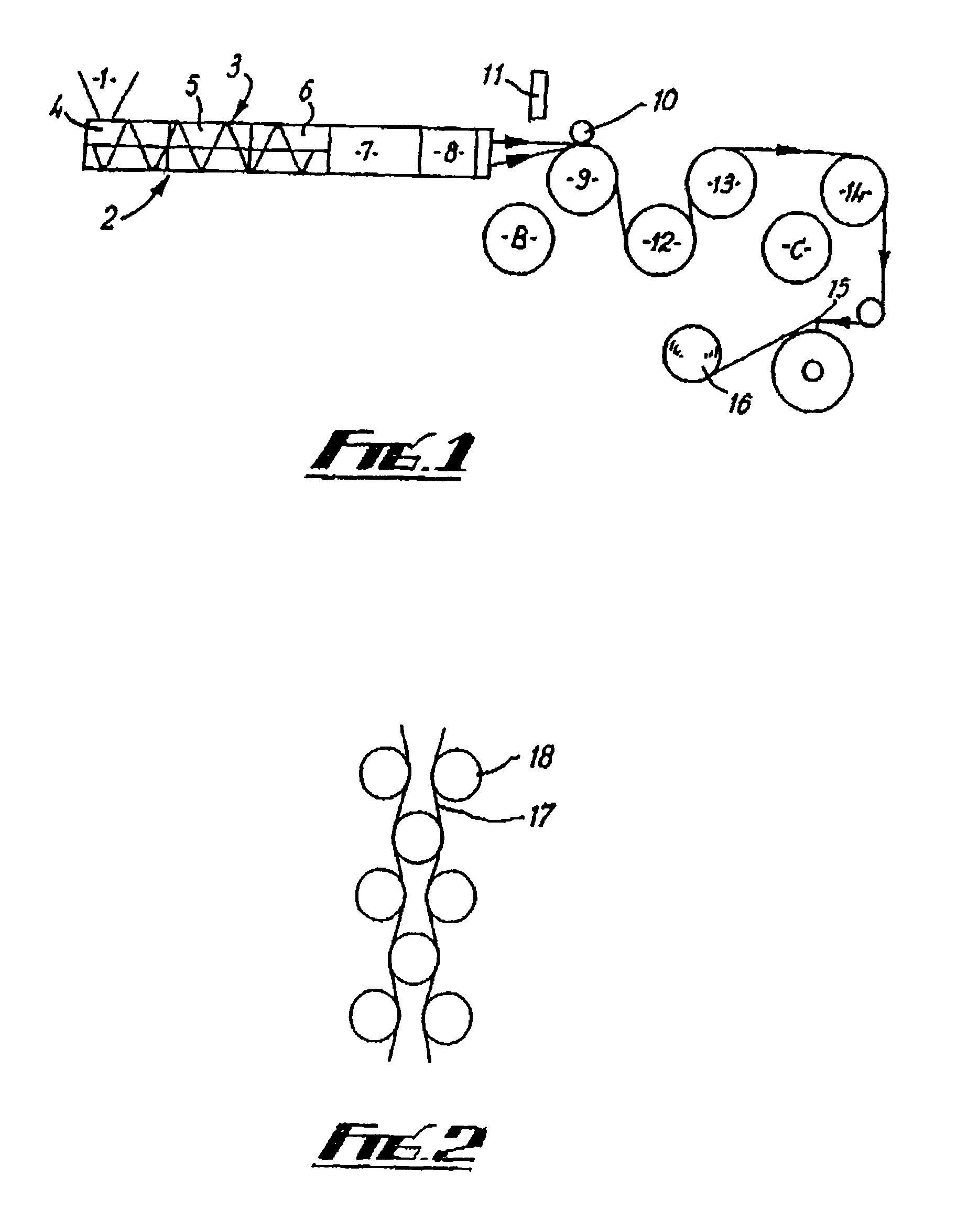Auxetic filamentary materials
a technology of auxetic materials and filaments, applied in the field of synthetic auxetic materials, can solve the problems that auxetic materials have not been successfully made in the form of fibres, and achieve the effect of enhancing energy absorption properties and fibre pullou
- Summary
- Abstract
- Description
- Claims
- Application Information
AI Technical Summary
Benefits of technology
Problems solved by technology
Method used
Image
Examples
Embodiment Construction
[0032]FIG. 1 shows conventional melt extrusion apparatus used in performing the process of the invention, by way of example.
[0033]The apparatus has a powder hopper 1 leading to a barrel 2 containing an Archimedean feed screw 3. The extruder barrel 2 has three zones feed, compression and metering zones 4, 5, 6. The screw 3 has a 3:1 compression ratio, a 1 inch (2.54 cm) diameter and a length-to-diameter ratio of 24:1.
[0034]The barrel 2 is connected via a diameter-reducing adapter section 7 to a die 8 comprising a 40-hole spinneret, the holes being of 0.55 mm diameter.
[0035]In front of the die there is a cooling roller 9 with a pinch roller 10 and an air knife 11, and subsequent guide rollers 12-14, a guide rail 15 and a wind-up roller 16.
[0036]A heater is provided (not shown) for heating the barrel 2 at the three separate zones 4, 5, 6 along its length, and also at adapter 7 and die 8.
[0037]The heating arrangement permits different temperatures to be maintained for each of these and ...
PUM
| Property | Measurement | Unit |
|---|---|---|
| pressure | aaaaa | aaaaa |
| capillary length | aaaaa | aaaaa |
| angle | aaaaa | aaaaa |
Abstract
Description
Claims
Application Information
 Login to View More
Login to View More - R&D
- Intellectual Property
- Life Sciences
- Materials
- Tech Scout
- Unparalleled Data Quality
- Higher Quality Content
- 60% Fewer Hallucinations
Browse by: Latest US Patents, China's latest patents, Technical Efficacy Thesaurus, Application Domain, Technology Topic, Popular Technical Reports.
© 2025 PatSnap. All rights reserved.Legal|Privacy policy|Modern Slavery Act Transparency Statement|Sitemap|About US| Contact US: help@patsnap.com


